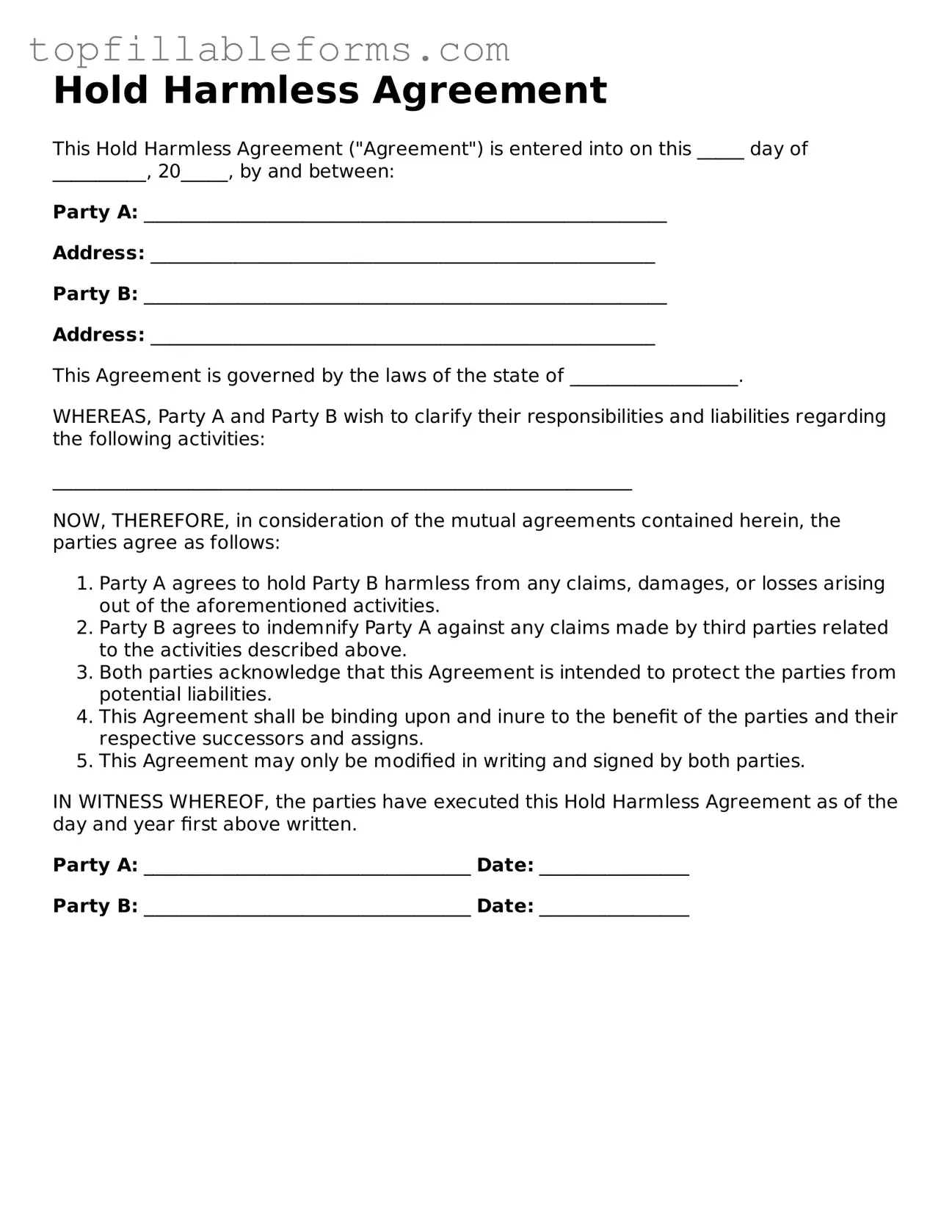Hold Harmless Agreement
This Hold Harmless Agreement ("Agreement") is entered into on this _____ day of __________, 20_____, by and between:
Party A: ________________________________________________________
Address: ______________________________________________________
Party B: ________________________________________________________
Address: ______________________________________________________
This Agreement is governed by the laws of the state of __________________.
WHEREAS, Party A and Party B wish to clarify their responsibilities and liabilities regarding the following activities:
______________________________________________________________
NOW, THEREFORE, in consideration of the mutual agreements contained herein, the parties agree as follows:
- Party A agrees to hold Party B harmless from any claims, damages, or losses arising out of the aforementioned activities.
- Party B agrees to indemnify Party A against any claims made by third parties related to the activities described above.
- Both parties acknowledge that this Agreement is intended to protect the parties from potential liabilities.
- This Agreement shall be binding upon and inure to the benefit of the parties and their respective successors and assigns.
- This Agreement may only be modified in writing and signed by both parties.
IN WITNESS WHEREOF, the parties have executed this Hold Harmless Agreement as of the day and year first above written.
Party A: ___________________________________ Date: ________________
Party B: ___________________________________ Date: ________________
